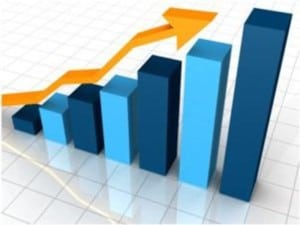One reason businesses deal with failure of results in SAP implementations is lingering memories of the Y2K effect. At that time, businesses everywhere simply wanted to install ERP systems to take care of the looming potential crisis over the millennial changeover. After Y2K, the brief downturn in demand for ERP systems, along with the tech bubble burst in the stock market, created additional pressure. Unfortunately, they also overlooked SAP’s full potential throughout the chaos. Because of this, many businesses may not realize SAP delivers “better, faster, and cheaper” solutions together with business benefit.
Because so many custom systems had been developed from the era when disk space and memory were incredibly expensive, nearly all programs were written with two-digit designations for the year. As we approached the year 2000, many businesses feared that those same systems might read the date as 1900, have a different day of the week assigned, or not know how to handle the two-digit date at all. As a result, businesses rushed to implement ERP systems to manage this issue and to replace legacy systems with off-the-shelf software.
SAP’s Business Benefit
Leading up to Y2K, many businesses demanded for replacement of their legacy systems with new ERP systems until they focused almost exclusively on implementing SAP projects “better, faster, and cheaper.” Certainly this is not a bad thing, but business alignment and business drivers got lost in the fog of technical system replacements. Rather than doing system implementations that were focused on genuine business drivers, businesses installed nearly all ERP systems as technical system replacements.
After Y2K, vendors and companies everywhere continued to emphasize implementing and automating current business processes with “quick hit” IT system replacements, because that was the sales model they had developed. That sales model worked, so they centered presentations, approaches, methodologies, implementation tools, consulting training and prep — everything — around the Y2K “get it in” model.
While an SAP team should deliver every project on time and on budget, the focus on only current business processes fails to address the forward looking nature of business. Even to this day businesses implementing SAP still fail to see the system as any other kind of a capital asset where you build a business case with both a current state justification and a future state justification as well. The current state is nothing more than the “on time, on budget” back office operational project requirements while the future state looks at business strategy and builds those into the application as well. What do you want SAP to help you with in the future?
ERP Technicians Replace Systems – Consultants Use ERP to Transform Business
SAP projects fail to deliver for a number of reasons that have nothing to do with the software itself. SAP projects that focus almost exclusively on back office processes or operational excellence often use lagging indicators. These are important for evaluating current company health, and today’s (or yesterday’s, last months, etc.) indicators of marketplace performance, but they will not produce the world-class results most C-level executives are now looking for from SAP. [FN1]
Today, the marketplace still wants the “better, faster, cheaper” model of delivery, but now CEOs, CIOs, and CFOs are insisting that the application software must do more. It must deliver something more meaningful. It must deliver strategy and forward-looking business benefit.
Leading or Lagging Indicators?
Whether they are new implementations, upgrades, or re-implementations, SAP projects should begin with strategy, goals, and KPIs. Generally, developing goals, KPIs (Key Performance Indicators), and performance metrics have two types of measurement categories– leading indicators and lagging indicators. Leading and lagging indicators refer to “timing of cash flows within a corporation.” [FN2]
In the past, projects have applied lagging and leading indicators almost exclusively to economic output– not necessarily to that of business, but the impact of business on economies.
Recently, with the rise of using KPIs as a method to help drive business goals and strategy, projects have applied the idea of leading and lagging indicators to business. In the context of economics, Wikipedia defines these indicators as the following:
Lagging Indicator
“A lagging indicator is an economic indicator that reacts slowly to economic changes, and therefore has little predictive value. Generally these types of indicators follow an event; they are historical in nature. For example, in a performance measuring system, profit earned by a business is a lagging indicator as it reflects a historical performance; similarly, improved customer satisfaction is the result of initiatives taken in the past.” [FN3]
Leading Indicator
“[L]eading indicators are key economic variables… used to predict a new phase of the business cycle. A leading indicator is one that changes before the economy does.” [FN4]
The Future of SAP – Strategic Implementation
To finally realize business benefit from SAP, to achieve that elusive ROI, and to make a difference in the way your company works, you must change the way you approach your implementation. [FN5]
The Y2K days of any consultant who could learn to make system settings on the fly and support all those implementations are over. Because of this, the numerous application technicians who got their start in SAP when the demand was so high may not be able to deliver in today’s tremendously competitive market. After all, now that the Y2K scare is long past, businesses everywhere are beginning to ask an important question: “How do we make this huge investment actually provide a return?”
The type of vendor and consultant you employ must have business and application experience. Today more than ever, you must ensure that you find the right resources, and then do some upfront planning and prep work yourself.
Long before your implementation or upgrade project starts, the implementation focus must change.
While focusing on process improvement is critical in today’s market, doing so is no longer enough to win in today’s marketplace. All of your competitors are working on process improvement, so it will not differentiate you in today’s market. Of course, process improvement still has to be done, but you must do so with a serious strategy focus to your SAP implementation or upgrade.
Start by looking out at your competitive landscape:
Where are your company’s strengths and weaknesses in comparison to your competitors’? Are there areas in comparison to them that you are not executing particularly well? Should you then focus on those processes to improve your competitive position?
Are there market opportunities you are missing, or are there gaps in your product portfolio? Would partnering with another firm help fill those gaps?
Is your company large enough that you can change the vendor dynamic for certain key products or services by outright purchasing, or possibly underwriting new competitive vendors, to ensure better products and services at better prices?
Should you emphasize the areas you do well at against your competition as well?
How do you use SAP to enable all of the processes you’ve just answered these questions to? How do you develop the key goals and KPIs to meet the new market challenges out there in today’s competitive landscape? What SAP reports or tools will you need to support your leading indicators? What KPIs should you focus on first?
SAP has an incredible number of flexible options to achieve genuine business benefit, find that elusive ROI, and make a real difference in the marketplace. But to get there, take the first step to changing your implementation approach– define the business reason for your implementation or upgrade before you even begin. [FN6]
_____________________________________________________________________________________________________________________________________________________
[FN1] Using SAP to improve Revenue and Profitability
https://www.iitrun.com/using-sap-to-improve-revenue-and-profitability
[FN2] Bloomberg Glossary, http://www.bloomberg.com/invest//glossary/bfglosl.htm (retrieved 9/21/2009)
[FN3] Wikipedia, http://en.wikipedia.org/wiki/Lagging_indicator (retrieved 9/21/2009)
[FN4] Wikipedia, http://en.wikipedia.org/wiki/Leading_indicator (retrieved 9/21/2009)
[FN5] SAP as a Change Enabler
https://www.iitrun.com/sap-as-a-change-enabler
[FN6] Change How You Look at SAP to create ROI
https://www.iitrun.com/change-how-you-look-at-sap-to-create-roi






